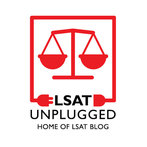***
This Reading Comprehension question is from the October 2004 LSAT.
First, let's write down some quick paragraph summaries so we know how this passage progresses and so we can find information in it. We will come back to these on later RC questions that use this passage.
Paragraph 1 = CAW pays for legal services
Paragraph 2 = Lawyers concerned
Paragraph 3 = Plan hurts legal services
We note the author's opinion in the final paragraph; it's often important to know his or her opinion in order to answer some of the questions. Now, what is the main point of this passage? It describes the plan, looks at the arguments of opponents and proponents, and sides with the opponents. In our pre-phrase of what the main point might be, we can say something like "The CAW legal services plan will hurt the quality of legal services." That's the general thrust of the passage.
Going through the answer choices, we see that choice E fits our pre-phrase well. Let's quickly go through the other answer choices to see why they're wrong.
A) This is the opposite of what the passage says. It doesn't say that the plans are good even in the short run, and says that lawyers and clients will both be hurt, not that the former will profit at the latter's expense.
B) Again, the opposite of what we want. It totally misstates the author's opinion, calling the plans "effective" even though the main point is that they're not effective.
C) Beyond the passage's scope. It says nothing about a new plan to replace the CAW plan, a plan that is more "equitable" while keeping legal costs "affordable." The passage just says that the CAW plan won't be beneficial. Presenting a new plan isn't part of the passage's main point.
D) Too narrow in scope. The passage is about much more than what lawyers say about the plan. The author himself expresses a clear opinion, and we also hear from those who support the plan. This choice doesn't represent the main point.
E) Correct.
Remember:
1) Paragraph summaries are helpful in RC. Writing just a word or two next to each paragraph is a good strategy for getting an overview of the passage and a map of where certain details are.
2) A pre-phrase of an answer can make finding the right answer choice faster, which is vital on this tightly-timed exam.
3) Look out for answer choices that are the opposite of what we're looking for or are too broad or narrow in scope.


